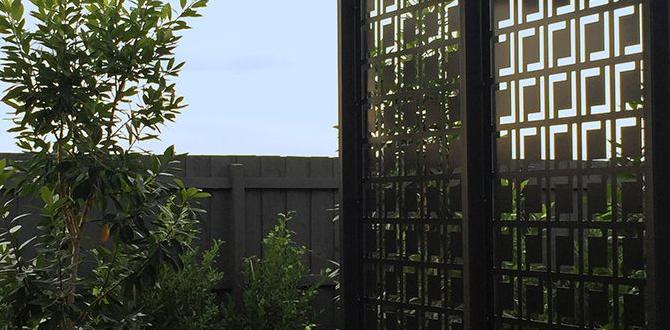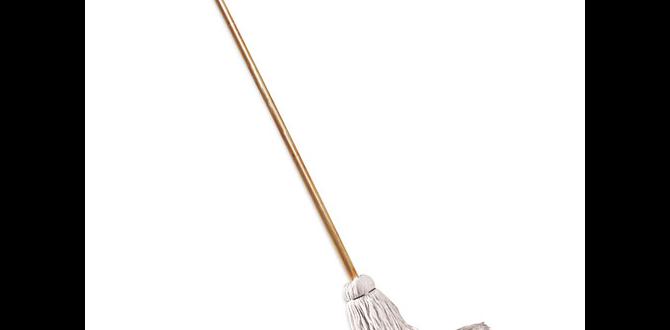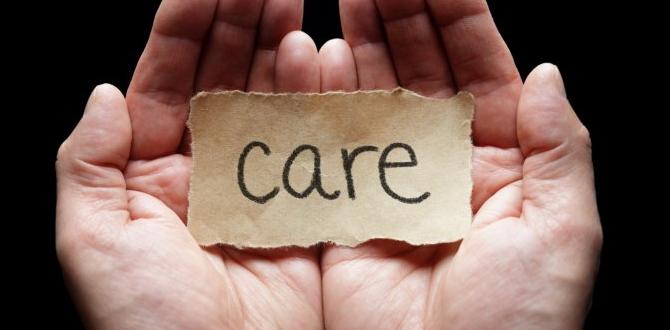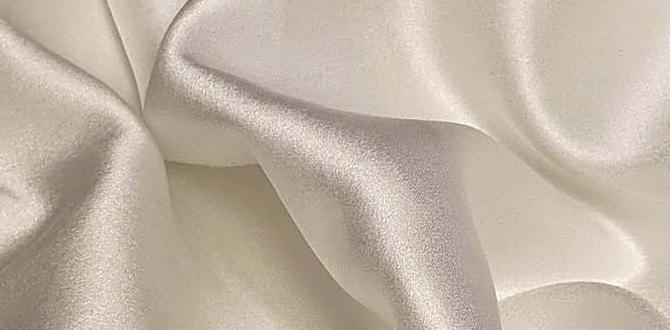Have you ever wondered how to make your plants thrive? Many gardeners seek the secret to healthy growth. One amazing trick is using perlite for gardening.
Perlite is a lightweight, white material. It looks a bit like tiny popcorn pieces. This remarkable substance helps with soil drainage and aeration. It’s like giving your plants a breath of fresh air!
Did you know that perlite is made from volcanic rock? When heated, it pops up, turning into the fluffy stuff we use for gardening. This fun fact shows how nature offers us great tools.
Imagine your potted flowers or vegetables growing strong and vibrant. With perlite, that dream can come true! Using it in your garden can make a big difference.
Are you ready to discover how perlite can change your gardening game? Let’s dig deeper into this amazing gardening ally!
Perlite For Gardening: Benefits And Usage Techniques
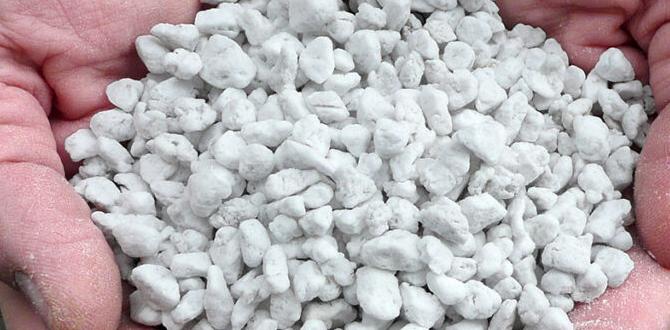
Perlite for Gardening
Perlite is a lightweight material made from volcanic glass. It’s fantastic for helping plants grow. By adding perlite to soil, you boost drainage and aeration. This means roots can breathe better and won’t rot. Have you ever wondered why some plants thrive while others struggle? Using perlite can make a big difference! It’s also perfect for starting seeds. Did you know that perlite can hold moisture, too? This makes it a winner for gardening!What is Perlite?
Definition and origin. Physical and chemical properties relevant to gardening.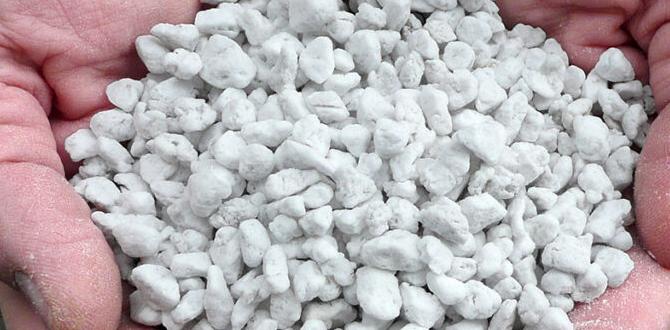
Perlite is a cool, lightweight rock that helps plants thrive. It comes from heated volcanic glass. When heated, it pops like popcorn. This gives perlite its fluffy texture. It is excellent for aerating soil, allowing air and water to dance around the roots. Plus, it doesn’t break down. In gardening, this means plants stay happy and healthy!
| Property | Description |
|---|---|
| Lightweight | Easy to handle and mix! |
| pH Neutral | Does not mess with soil acidity. |
| Retains Moisture | Helps keep plant roots hydrated. |
This magical ingredient makes gardening easier. With perlite, your plants will thank you for the extra love. After all, happy plants can brighten any space, even on a rainy day!
Benefits of Using Perlite in Gardening
Enhanced aeration and drainage. Improved moisture retention.
Using perlite in gardening can really help your plants grow. It lets air move freely to the roots, which is key for strong plants. Also, the tiny white pieces keep soil light. This means water drains well, preventing rot. Plus, perlite holds some moisture, so plants do not dry out quickly. Healthier roots lead to vibrant plants.
What are the key benefits of using perlite in gardening?
Perlite enhances aeration and drainage while improving moisture retention. These features create a better environment for your plants to thrive.
Key Points
- Increases air flow to roots.
- Helps excess water drain away.
- Maintains necessary moisture levels.
How to Use Perlite in Your Garden
Mixing with potting soil. Using as a top dressing.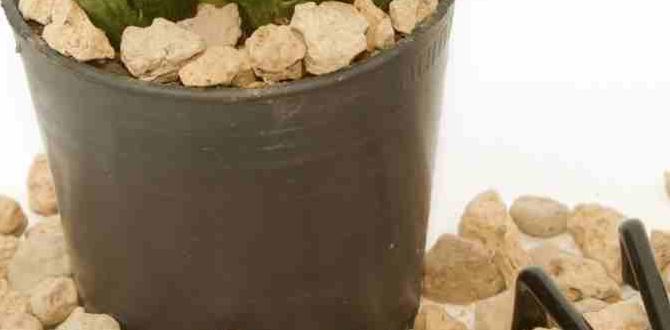
Using perlite in your garden is super easy! First, you can mix it with potting soil. This helps with air flow and drainage. Your plants will love the extra oxygen!
- Mix one part perlite with three parts potting soil.
- Stir well to combine before planting.
Next, use perlite as a top dressing. It keeps the soil cool and adds a nice look. It also helps hold moisture. Your garden will stay healthy and fresh!
Types of Plants That Benefit from Perlite
Houseplants and indoor gardening. Outdoor plants and landscaping.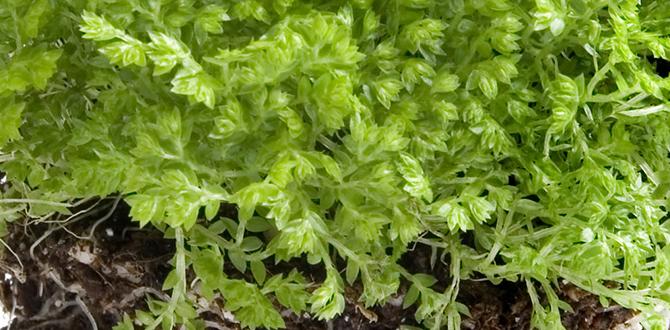
Many plants love perlite like kids love ice cream! Houseplants, such as spider plants and peace lilies, thrive with it. Perlite improves air flow and drainage, keeping roots happy. Outdoor plants, like azaleas and tomatoes, also benefit from its magic. It helps soil stay light and prevents waterlogging. In landscaping, perlite is a superstar for mixing with soil to create vibrant gardens everyone talks about!
| Plant Type | Benefits of Perlite |
|---|---|
| Houseplants | Improves drainage and air circulation |
| Outdoor Plants | Prevents water pooling and enhances growth |
Perlite vs. Other Soil Amendments
Comparison with vermiculite. Benefits over coconut coir.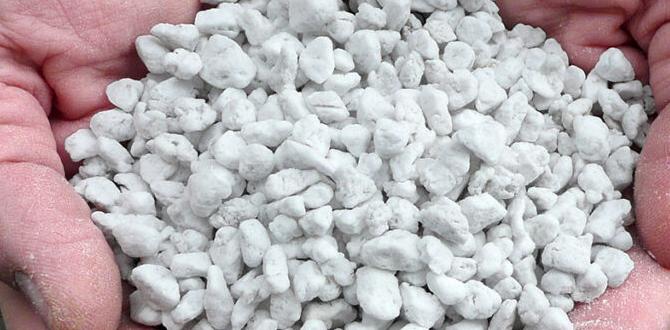
Perlite offers unique advantages compared to vermiculite and coconut coir. Unlike vermiculite, which holds more water, perlite keeps roots oxygenated. This is vital for plant health. Additionally, perlite is lightweight and helps with drainage. It is easier to handle and mix into soil.
In contrast to coconut coir, perlite is less acidic. This makes it a great choice for most plants. Moreover, perlite will not break down over time, ensuring lasting benefits.
What is better, perlite or vermiculite?
In many cases, perlite is better than vermiculite. It allows for better airflow and drainage, which supports plant growth.
Benefits of perlite over coconut coir
- Lightweight and easy to use.
- Improves drainage for healthier roots.
- Less acidic than coconut coir.
How to Store and Handle Perlite Safely
Proper storage methods. Safety precautions during handling.
To keep perlite safe and sound, use a sealed container. A bucket with a lid or a bag works well. This prevents spills and keeps moisture out. Remember the golden rule: store it in a dry place! Handling it is important too. Always wear a mask. Dust might fly around, and we don’t want you sneezing like a cat with a cold!
| Storage Method | Safety Precautions |
|---|---|
| Sealed container | Wear a mask |
| Dry location | Avoid contact with eyes |
Following these steps can help you handle perlite safely and efficiently. That way, you keep your garden happy, and yourself too!
Common Myths about Perlite in Gardening
Debunking misconceptions. Clarifying usage and benefits.
Many people have misunderstandings about perlite for gardening. They think it is harmful or only for special plants. In reality, perlite is safe and very helpful. It helps soil drain better and keeps plants healthy. Here are some common myths:
- Myth: Perlite is toxic to plants.
- Reality: Perlite is non-toxic and safe.
- Myth: It’s only for professional gardeners.
- Reality: Anyone can use perlite!
- Myth: Perlite doesn’t hold moisture.
- Reality: It actually helps maintain moisture balance.
Understanding these facts makes gardening easier and more enjoyable for everyone.
Why is perlite used in gardening?
Perlite improves soil aeration and drainage. It supports healthy root growth and prevents soil compaction.
Environmental Impact of Perlite Mining
Sustainability of perlite as a resource. Ecofriendly practices in perlite production.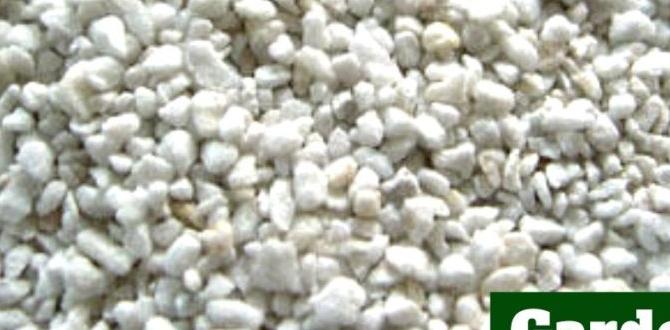
Mining perlite can impact our planet, but there’s good news! Many companies are working to make this process safer and greener. By using eco-friendly practices, they reduce waste and protect local wildlife. Some even recycle water used in mining, which is like giving a drink to a thirsty plant! In fact, studies show that sustainable mining methods can cut energy use by over 30%. A little care goes a long way in keeping our Earth happy!
| Practice | Impact |
|---|---|
| Water Recycling | Reduces waste and conserves resources |
| Energy Efficiency | Decreases carbon footprint significantly |
Conclusion
In conclusion, perlite is a fantastic tool for gardening. It helps with drainage and aeration in soil. This keeps plants healthy and happy. You can easily mix it into your potting soil or garden beds. Try it out in your next gardening project! For more tips on using perlite, check out gardening websites or local gardening books. Happy planting!FAQs
What Are The Benefits Of Using Perlite In Gardening Soil Mixes?Perlite helps garden soil stay light and fluffy. This means plants can grow their roots more easily. It also helps with water drainage, so plants don’t get too soggy. Plus, perlite helps keep air in the soil, which is good for plant health. Using perlite can make your garden thrive!
How Does Perlite Improve Drainage And Aeration In Potted Plants?Perlite is a light, white material we add to soil. It helps water flow better through the soil. This way, the roots of the plants get air and don’t get too wet. Good air and proper drainage keep our plants healthy and happy. Using perlite makes it easier for your plants to grow strong.
Can Perlite Be Used Alone As A Growing Medium, Or Is It Better Mixed With Other Components?You can use perlite alone, but it’s better when mixed with other materials. Perlite holds air and improves drainage. When you mix it, plants get more nutrients and water. A mix helps your plants grow strong and healthy!
What Types Of Plants Benefit The Most From The Addition Of Perlite To Their Soil?Plants that like well-drained soil benefit from perlite. This includes cacti, succulents, and some houseplants. Perlite helps keep the soil light and allows water to flow easily. If you grow these kinds of plants, adding perlite can help them stay healthy!
How Should Perlite Be Incorporated Into Existing Garden Beds Or Containers To Enhance Plant Growth?To use perlite in your garden beds or containers, first mix it into the soil. You can add about one part perlite to three parts soil. This helps the soil hold water and air. It makes it easier for your plants’ roots to grow strong and healthy. Just make sure to mix it well so everything is even!
{“@context”:”https://schema.org”,”@type”: “FAQPage”,”mainEntity”:[{“@type”: “Question”,”name”: “What Are The Benefits Of Using Perlite In Gardening Soil Mixes? “,”acceptedAnswer”: {“@type”: “Answer”,”text”: “Perlite helps garden soil stay light and fluffy. This means plants can grow their roots more easily. It also helps with water drainage, so plants don’t get too soggy. Plus, perlite helps keep air in the soil, which is good for plant health. Using perlite can make your garden thrive!”}},{“@type”: “Question”,”name”: “How Does Perlite Improve Drainage And Aeration In Potted Plants? “,”acceptedAnswer”: {“@type”: “Answer”,”text”: “Perlite is a light, white material we add to soil. It helps water flow better through the soil. This way, the roots of the plants get air and don’t get too wet. Good air and proper drainage keep our plants healthy and happy. Using perlite makes it easier for your plants to grow strong.”}},{“@type”: “Question”,”name”: “Can Perlite Be Used Alone As A Growing Medium, Or Is It Better Mixed With Other Components? “,”acceptedAnswer”: {“@type”: “Answer”,”text”: “You can use perlite alone, but it’s better when mixed with other materials. Perlite holds air and improves drainage. When you mix it, plants get more nutrients and water. A mix helps your plants grow strong and healthy!”}},{“@type”: “Question”,”name”: “What Types Of Plants Benefit The Most From The Addition Of Perlite To Their Soil? “,”acceptedAnswer”: {“@type”: “Answer”,”text”: “Plants that like well-drained soil benefit from perlite. This includes cacti, succulents, and some houseplants. Perlite helps keep the soil light and allows water to flow easily. If you grow these kinds of plants, adding perlite can help them stay healthy!”}},{“@type”: “Question”,”name”: “How Should Perlite Be Incorporated Into Existing Garden Beds Or Containers To Enhance Plant Growth? “,”acceptedAnswer”: {“@type”: “Answer”,”text”: “To use perlite in your garden beds or containers, first mix it into the soil. You can add about one part perlite to three parts soil. This helps the soil hold water and air. It makes it easier for your plants’ roots to grow strong and healthy. Just make sure to mix it well so everything is even!”}}]}
